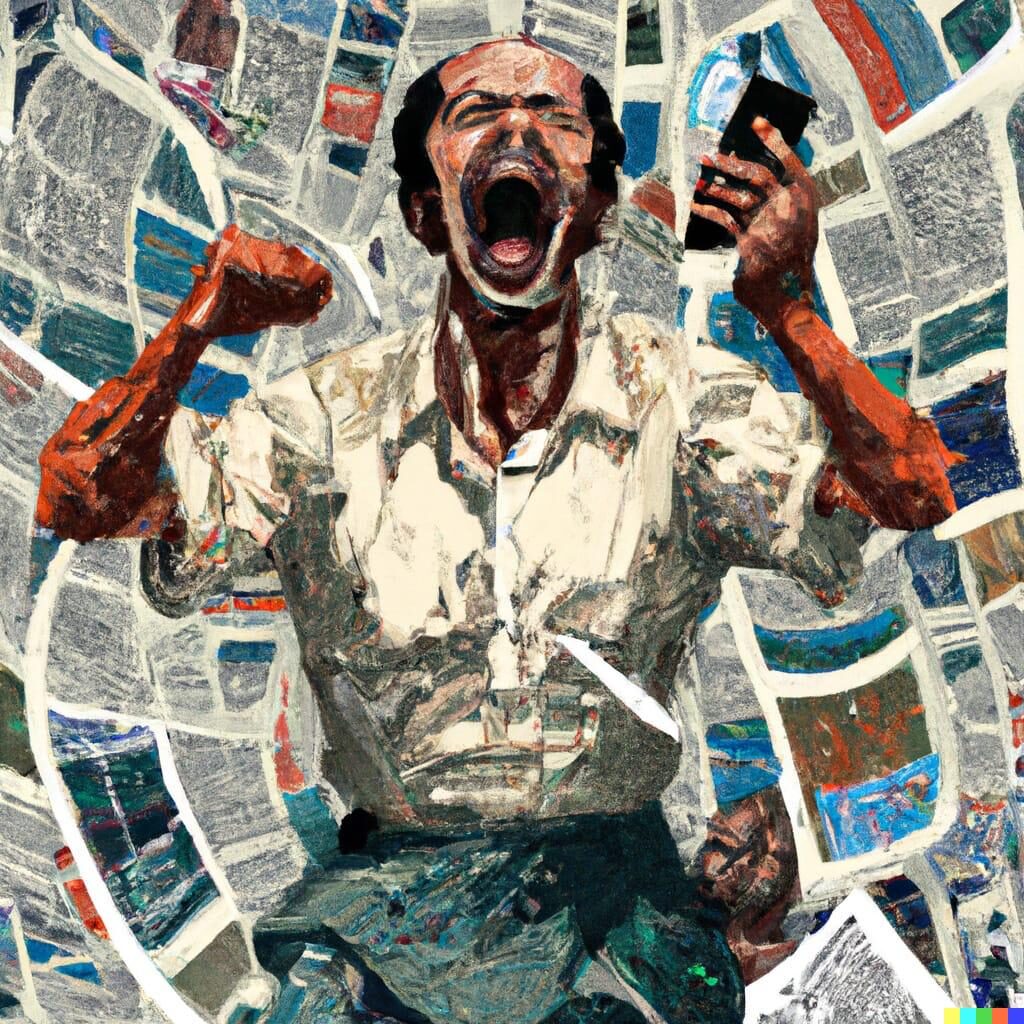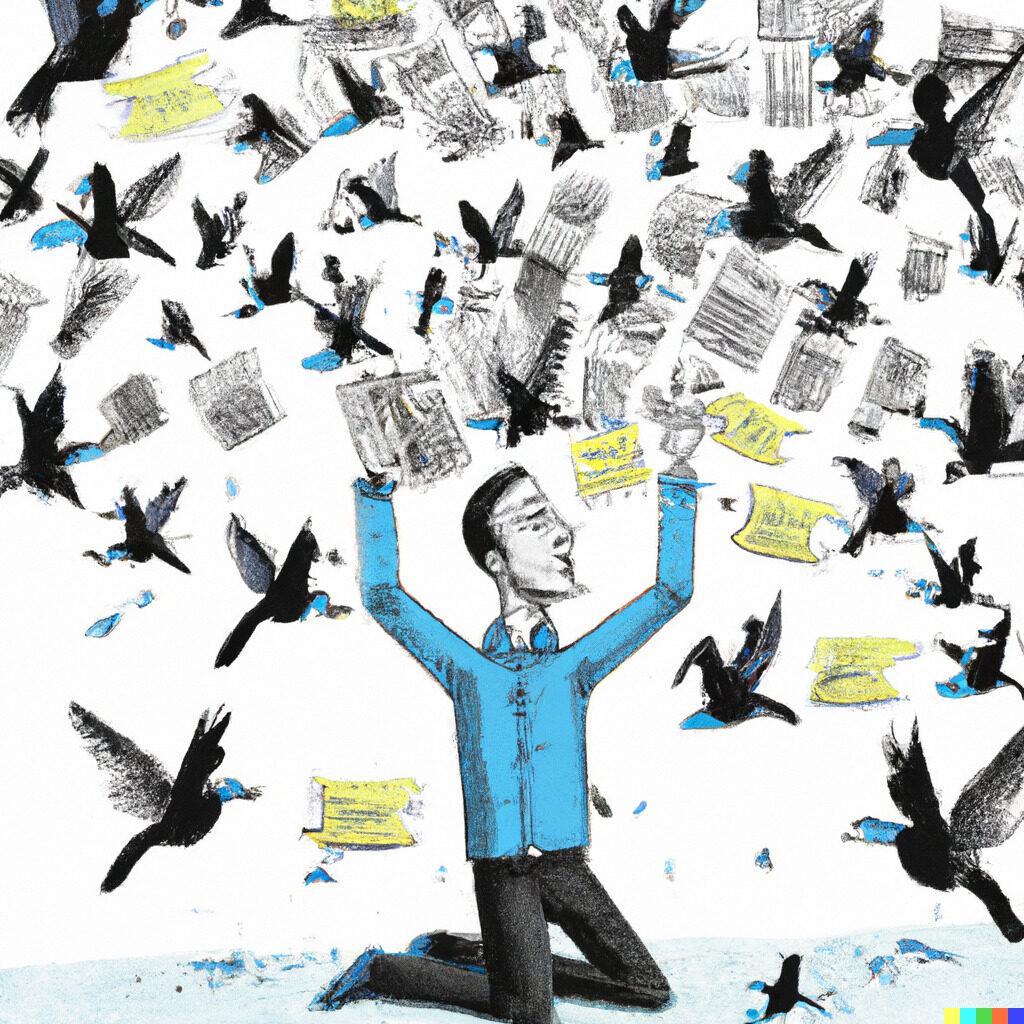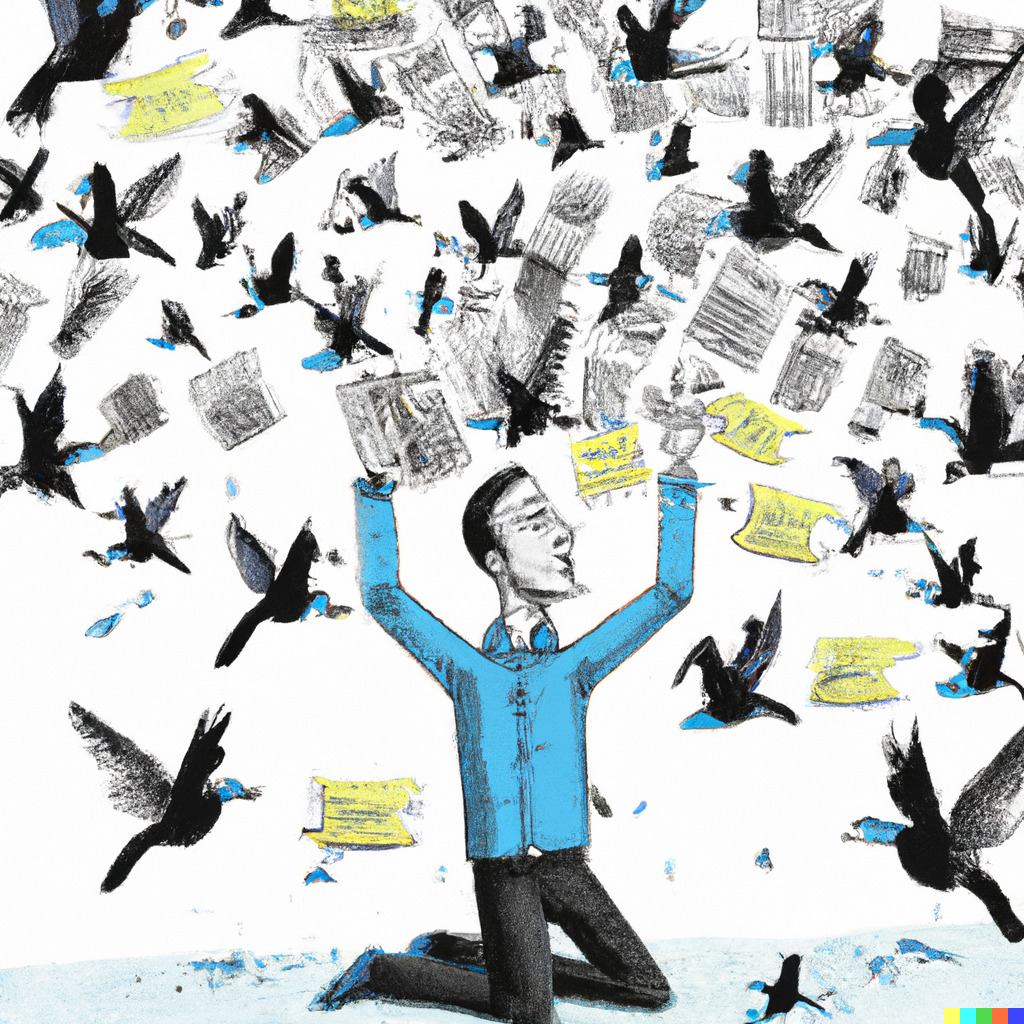Back in January 2021, a fringe conservative outlet known as the Tatum Report, had released a report saying that “evidence is mounting that the FBI was involved in planning and executing the [Jan.6] Capitol event after a report dropped Monday night silently from Revolver News,” the website said.
By Jesse Glazer
Despite the falsehoods this outlet had reported, evidence could not have been more clear that those involved were MAGA supporters and extremists hell-bent on proving that the 2020 U.S. election was stolen from Donald Trump.
“I think we are literally like rats in an experiment, clicking on a thing and getting a treat. And that’s what Facebook is doing to us. And at some point, the pleasure that we get from the sociality of it is more important than the truth,” says Brett Caraway, a professor at the University of Toronto Mississauga, in the Institute of Communication, Culture, Information and Technology (UTM).
Fake news has become rampant in its popularity. Not only in frequency but also through its association with mainstream media. It has seemed as though the term came out of nowhere, that the former President, Donald Trump, coined the term and now fringe conservatives and conspiracy theorists have latched onto it like a baby to its mother’s teat. Social media has played a major contributing factor in how fake news has evolved. The internet itself has breathed new life into it, giving it endless wind.
Last year, a Facebook whistleblower came out and shared some revelatory news regarding the social media platform and its willingness to blatantly disregard global political manipulation.
A 6,600-word memo, released by former Facebook data scientist Sophie Zhang, is filled with various examples where heads of government and political parties, in countries all over the world, were using fake accounts or misrepresenting themselves in order to sway public opinion.
“In the three years I’ve spent at Facebook, I’ve found multiple blatant attempts by foreign national governments to abuse our platform on vast scales to mislead their own citizenry and caused international news on multiple occasions,” Zhang wrote.

Fake news has seemingly become a term that has been co-opted by fringe conservative groups and Neo-Nazis. But while that’s the case, social media has played a significant role in the way fake news circulates due to its ease of accessibility.
“I view it as an existential threat to democracy worldwide,” Caraway says.
The world is, by all appearances, stuck in this limbo. So, the question that remains is where do journalists go from here? The important goal that journalists will have over the next generation is trying to figure out how to deal with it, combat it and overcome it.
According to Jeffrey Dvorkin, a senior fellow at Massey College and author of the book, “Trusting the News in the Digital Age,” Trump isn’t the originator of “fake news.” As Dvorkin explained, one of the earliest instances — and admittedly one of his favourites — is from the Russian Revolution.
Dvorkin, with a grin on his face and a little chuckle, seemed excited to share this story about fake news. Dvorkin fixed himself in his chair, readjusted his glasses and began to explain.
“After World War One in Britain, there was a standing army of four million soldiers that hadn’t been demobilized. So they’re just sort of hanging around England,” Dvorkin says.
“The new communist government in Russia, the Bolsheviks, spread something called the Zinoviev telegram,” he says.
Dvorkin explained that the Russians sent a telegram to a number of editors in London and on Fleet Street, saying that there was a Bolshevik faction in the standing army and they were going to overthrow the British government.
“The purpose of this telegram was not to tell the truth, but to basically sew insecurity. And that to me is that destabilization is the name of the game,” Dvorkin says.
For Dvorkin and many others in journalism, fake news has essentially become something to create fear and destabilization. Its goal isn’t necessarily to discern truth from lies, but to bury the truth so far down, it’s nearly impossible to dig back up.
Dvorkin expressed that digital culture and the internet, while a wonderful thing in its inception, praising itself as the great equalizer, it’s allowed anyone to call into question — fact.
“Internet culture has given people a sense of their own availability to express themselves, which can be a good thing, obviously. What it does do is that it calls into question somebody else’s expertise. If your opinion and my opinion are equally valid, then the idea that there might be a third party who could determine whose opinion is correct, doesn’t exist anymore,” Dvorkin says.
What’s seemingly been occurring over the last number of years through the rise of fake news is the values society seemingly holds in high esteem are perhaps no longer shared. And as Dvorkin points out, that makes it easier to question the various institutions that constitute a democratic society.
“The pervading vibe of unmediated democracy is what we’re living through right now,” Dvorkin says. “The idea that you can post something on the internet, without any blowback really, is something that we as a society have to figure out how to handle.”
“I think we are literally like rats in an experiment, clicking on a thing and getting a treat.”
-Brett Caraway
For Eric Merkley, an assistant professor of political science at the University of Toronto, while there may not be any blowback to the democratization of information, that’s not necessarily the issue at hand.
Merkley expressed that there just isn’t enough data or evidence to really say that social media and the internet have played a role in this massive growth of disinformation or “fake news.” But, whether it’s to the extent that social media allows for the dissemination of false information, there’s another side to this story.
“[Social media] can allow for the transmission of inaccurate information more than in the past. But it also allows for the transmission of accurate information more than in the past,” Merkley says.
“So whether social media contributes net positively or negatively to the transmission of truthful information is something we can’t say for any certainty,” he says.
Merkley says that in the social media space, there’s been a fragmentation of the media environment and so it’s easier for people to communicate messages, and that moves beyond gatekeepers in the press.
“So the press is having a traditional role as kind of a mediator in politics, distributing information to the public, [but] it’s now more free and open than it used to be. And so there is more opportunity for those things to circulate,” he says.
Fake news, as Merkley explained, has a very specific term from an academic perspective.
For those in academia, “it means articles that are spread, [it’s] deliberately false information. So it’s disinformation, that is made to look like it is coming from a legitimate news source,” Merkley says.
Joyce Grant, a new Humber College journalism professor, is working to implement a solution at a much earlier age. Grant wrote a children’s book to help teach kids about the importance of spotting fake news and teaching kids to recognize from a much earlier age what misinformation and disinformation looks like.
In her book, “Can you Believe it? How to Spot Fake News and Find the Facts,” Grant wrote in her author’s note, why she wrote the book.
“I get to meet with thousands of students every year to talk about journalism. More and more, our discussions turn to misinformation and ‘fake news’ and what kids can do about it,” Grant says.
“As you know by now, ‘critical thinking’ is key. Asking the big question: ‘Who created it? Why?’ and most important, ‘Does this make sense?’” No matter how tricky the fake news creators get, thinking critically will help us to sort fact from fiction,” she says.

Merkley says there needs to be “an actual serious effort to prepare citizens for online digital spaces.”
Caraway used to belong to the group of people that Merkley is talking about, but says there’s more nuance to it than people may realize.
“We need good third party objective institutions that can, you know, sort of evaluate information and then say, ‘this is good, or this is bad,’ we need to teach people how to evaluate sources online,” Caraway says.
A potential solution though are fact-checking sites like snopes.com. According to their website, “when misinformation obscures the truth and readers don’t know what to trust, Snopes’ fact-checking and original, investigative reporting lights the way to evidence-based and contextualized analysis. We always link to and document our sources so readers are empowered to do independent research and make up their own minds.”
Teaching kids about sites like this and teaching students to use resources like Snopes in order to navigate through fake news, how to spot it and how to address it so that in the future, fake news becomes less impactful on the moral fibre of the global community – quelling this great beast.
Caraway says we need to educate people on the fact that Infowars is different from outlets like the New York Times or the Washington post — that’s media literacy.
“And then we also need to teach people how to find information, quality information, how to do a search query, where to look, how to use a library, that’s information literacy. And I used to think, some magic combination of those things, objective assessment, media literacy and information literacy would help people. And I still believe that media literacy and information literacy plays an important role in all of this. But I’m less confident that humans are really after the truth,” Caraway says.
And to Caraway, social media has capitalized on this phenomena that he described as “group polarization.” Caraway put it simply, that group polarization is basically when a group of people have a shared interest and there’s a spectrum with those people. Some are on the extremes, while others are not. But as Caraway explained, over time, the position of the group would move more and more to the extreme position, when in these well defined groups.
And those people who express discontent or speak out within the group are less likely to do so over time.
“Facebook is made for this, its whole model is to put you in a cat group or an abortion group or an immigration group, and then let you share [stuff] together and go crazy over time, and push you to more and more extreme positions. And Facebook loves it!” Caraway says.
“Facebook is just like a machine that’s built to do group polarization. And then there’s another phenomenon that’s going on, which is equally disturbing. And it’s called belief polarization,” he says.
Caraway explained that belief polarization is when groups of people can see, witness or read about the same event and draw drastically different conclusions about what transpired and it’s based on group affiliation.
And this is part of what we’re seeing with fake news. Groups of people are gathering and denying certain events or claiming that news from reputable organizations are fake news. Like Trump taking classified documents to Mar-A-Lago.
Some groups labelled it treason and a threat to national security, while others think that it’s some police state that the FBI are running.
“You can look at the same history that’s unfolding in front of you and come up with radically different opinions. And social media exacerbates all of that,” Caraway says.
Jack Nagler, the ombudsman at CBC, acts as an independent investigator of claims by the readership or viewership where information is false, incorrect, defamatory or puts others at a negative disadvantage. He took a unique perspective on the issue of fake news because he isn’t a journalist for the CBC.
“(Social media) can allow for the transmission of inaccurate information more than in the past. But it also allows for the transmission of accurate information more than in the past.”
-Eric Merkley
He acts on behalf of the people and so when someone claims that something is fake news it’s his job to investigate those claims and provide answers to the readers.
“So I get to be an advocate for Canadians, but also, an advocate for quality journalism, and explain why journalists work the way they work, because most people don’t know what that is,” Nagler says.
“So the connection to fake news, I suppose, is the fact that, [it’s] a phrase that has come into vogue, as you know, in the last few years. And so when people are upset about something, they often go to that label and say, well this doesn’t sound right. To me, it doesn’t smell right. And so they’ll use the term fake news,” he says.
Nagler said that people need to really utilize the skills they’ve acquired through their years of school in order to spot when something isn’t right about the news.
“You have to really apply your critical thinking skills, whether you’re a trained journalist or not,” Nagler says.
Nagler, like Caraway, Dvorkin and Merkley, says that moving the industry forward through this uncertain time of fake news is that there isn’t really an easy, “one-fix all” solution. It’ll require hard work and a nuanced approach from many facets in life.
“There’s no perfect solution. Number one, it’s a very complicated world of civil discourse that we have now and how that information travels and how you combat bad information with good information because usually the bad information sends a lot of juice here and it’s a lot more fun to read and believe,” Nagler says.

